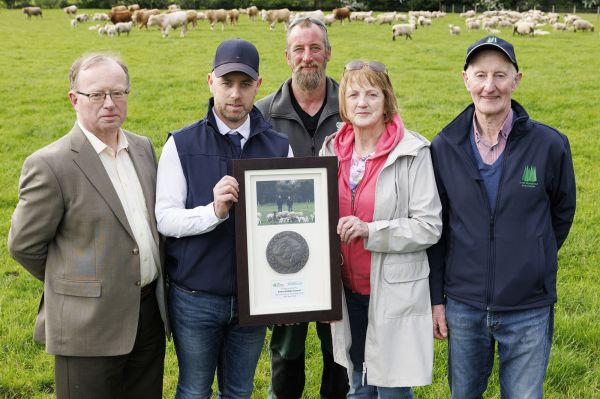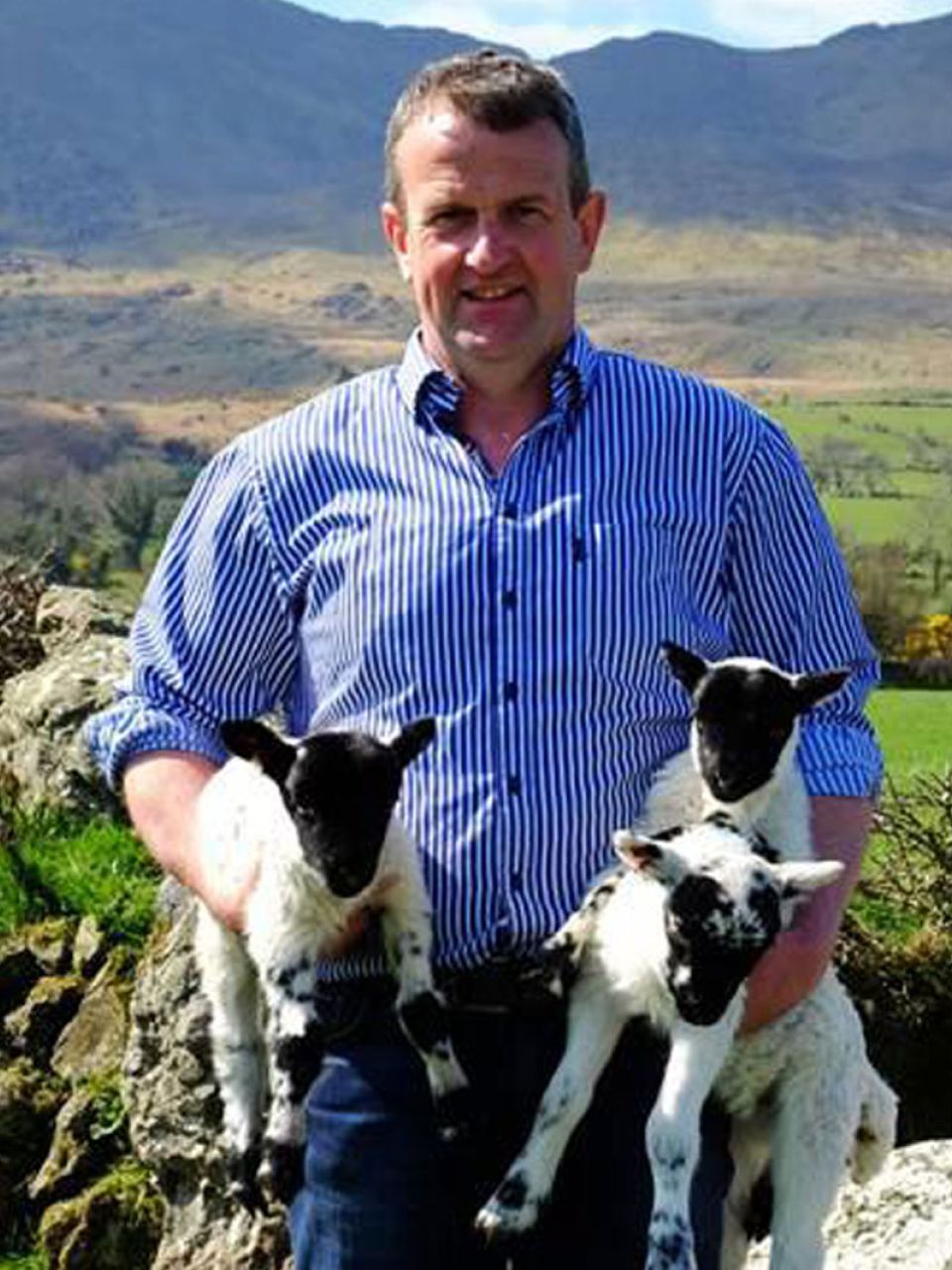Top sheep farm for IGA tour

The Connells – Eddie, Bernadette and Aidan – farm 90 hectares (ha) at Clonbullogue, of which 65ha are owned, with the remaining 25 farmed under a partnership agreement. While most of the farm is devoted to grass production, 15ha are used for tillage crops, which are a feed source for finishing animals on the farm. A 400-strong flock of ewes is the main enterprise, though there is also a substantial bull-beef production enterprise, with up to 150 animals, on average, on the farm at a given time.
Well-structured farm
Borris-type ewes make up the main breeding flock, which are essentially Cheviot/Suffolk cross-bred ewes. Historical production from the Connell flock has been excellent with scan figures showing a rate of 1.85 lambs for every ewe put to the rams. A dip in scan rate for the current season is not expected to be replicated. All lambs are finished on the Connell farm with a strong focus on finishing from grass.
To that end, the farm is well structured. The grassland is divided into paddocks with electric fencing and access to water provided at all times. Average paddock size is around 2ha, providing 37 paddocks in total. There is provision to further sub-divide each paddock with temporary electric fencing, as required, along the grazing season. This proves particularly useful during periods of rapid growth as grass runs ahead of consumption, offering opportunities to save forage as well as ensuring that grass quality is optimal at all times to maximise lamb and bull growth rates.
A good mix
A notable feature of the Connell farm is the complementary grazing of cattle and sheep. The Connells believe this mixed-grazing strategy significantly improves both grass utilisation and animal performance. A key efficiency result of this is that there has been very little concentrate feeding of lambs to finish. A lot of effort and work goes into flock management around lambing. Triplet lambs are fostered onto single ewes to maximise milk to lambs as well as minimising the hand rearing of triplets. The time-scale for lamb rearing is well set out. The aim with the spring mid-season flock is to have all lambs weaned by mid-June to coincide with the availability of post-silage after-grass, though this was a greater challenge this year for a period with the widespread early June drought also hitting the Connell farm. The vast majority of the lambs are finished and sold by September. That timescale fits in neatly with the purchase of weanlings for bull beef production. It also frees up grass availability for ewe flushing before mating.
Output and efficiency
There is ongoing investment in the Connell sheep enterprise. Five years ago, a new sheep shed was built, with the aim of simplifying management around lambing time. A sheep-handling unit is also in place, again with the specific aim of reducing stress and time spent on the various handling operations through the year.
Output and efficiency are the key production indices (KPIs) on the Connell farm with grass as the core feed, both for lamb finishing as well as maximising weight gain on bulls at critical growth periods.

Celebrating Irish lamb
The celebration of Irish lamb production is taken personally in the Comeragh mountains, spanning the Co. Waterford region from near the town of Dungarvan to Clonmel in south Tipperary.
Every July, local farming traditions and the history, culture, music and food of the mountainous Waterford region are celebrated during the Comeragh’s Wild Festival, now in its ninth year.
The festival programme includes sheepdog and sheep-shearing demonstrations and is a significant economic as well as a social boost to the entire Comeragh, Nire Valley and Copper Coast regions that skirt the newly developed and very popular Waterford Greenway.
The festival organisers have long stepped outside the comfort zone of expected attractions with the inclusion of wellness advocate, Aisling Larkin who, this year, provided a feast for all of the senses at Nell’s Farmhouse with well selected food products, all locally sourced. The Waterford native, who is back home and living in the region, dreamt up a novel modern dish featuring crispy Comeragh Lamb from Willie Drohan’s nearby flock. Aisling has a clear strategy in her offerings: “The Comeragh’s Wild Festival provides a platform to celebrate the incredible flavours and culinary traditions that can be found right here in our own back garden. By cooking with locally sourced ingredients, we support our local communities and gain a deeper appreciation for the rich tapestry of flavours that nature provides.”
This year’s four-day festival programme also offered opportunities for foraging and forest bathing, woodland crafts, a sunrise walk in the mountains, mindfulness, meditation and yoga, as well as guided hikes, surfing, a celebration of Irish culture and a locally produced docudrama on the final months of the Civil War in the region, to coincide with the 100th anniversary of that seismic and divisive time in Irish history.
A lamb feast
While Comeragh lamb is the central food theme, the organisers are nothing if not inclusive and eclectic in their culinary offerings, celebrating the very best local produce with a twist. The festival is in constant evolution, as organiser chairwoman Mary Flynn explains: “We regularly add new events to broaden the festival’s appeal and there is now a strong emphasis on celebrating and appreciating the flora and fauna of the Comeraghs and helping preserve it for future generations. This is a vast, varied region with magnificent beaches, amazing mountain terrain and some of the best walks, treks and outdoor facilities you’ll find anywhere in Europe.”




